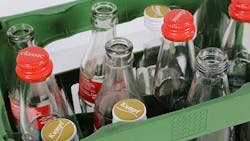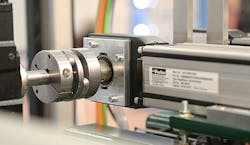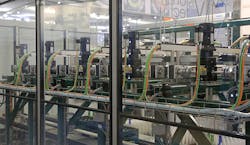Sortation Keeps the Returned Beverage Bottle Model Alive
Most people of a certain age have childhood memories of returning beverage bottles to their neighborhood store and getting back the coins they deposited on them. The value of that exchange was usually just enough for a further investment in an extra piece of candy from the same retailer. It’s a simple business model when viewed at the front-end, but if you restrict your viewpoint of anything to what happens in front of you, you’ll miss the sophisticated back-end operations that give the front-end the license to be simple.
Appreciating the intricacy of what makes any reverse supply chain work requires a logistics tour. That’s where automated material handling systems governed by smartly planned information systems make sense of forward and reverse flows segmented by fulfillment operations and sortation points. What separates the recirculation of beverage bottles from any other returnable asset is the sheer variety of shapes and sizes to be managed and the ability to do so with minimal loss and damage as the pace of business accelerates.
Let’s go back through the bottle return supply chain at the point we came in—at the store. When that retailer returns the bottles brought in by customers of all ages, it usually does so in differently mixed crates. Whatever business receives these crates from the retailer—whether a bottling company or a third-party bottle management service provider—the receiver must be able to detect differences and sort accordingly. This is a sophisticated skill, calling for the intelligence to remove counterfeit bottles and then refill or complete boxes with unmixed bottles.
With the proliferation of new and different packaging types on the global market, beverage producers are increasingly leaving the task of detecting, sorting and returning those bottles to companies that have made the necessary investment in training and systems to make it work efficiently.
In Germany, for example, Vision-Tec has made a business out of providing the necessary technology to bottling service providers to help them maintain a profit from the returns process. It offers modular systems for crate and bottle detection, combining flexible multi-camera capabilities with sortation. This technology uses vertical and oblique image capture as well as UV light to detect various shapes of bottles and labels. Even a bottle’s luminescence can be detected, and with ultrasound, bottle height can be checked—with or without a cap.
Why are bottlers adding more automated brawn to their system brains?
“Before, it would take 40-50 people to sort bottles by hand in some breweries,” answers Olaf Zeiss, product manager for linear actuators at Parker Hannifin’s Electromechanical Automation division in Europe. “When a subcontractor is sorting bottles they want to go as fast as possible because they get paid for every bottle.”
That also explains why Vision-Tec chose to work with Parker Hannifin to supply new actuators for their automated bottle handling and sortation systems. These actuators provided the higher velocity and acceleration required to meet the improved performance demanded by beverage producers and bottlers. At the same time, these actuators had to withstand the punishing temperatures of European summers and winters and the corrosive environments of bottling plants.
“In summertime these breweries and bottlers work 24 hours a day,” Zeiss adds. “These are wet environments, where the equipment is cleaned regularly and the plant doors are normally opened because bottles are always coming in and going out. The actuators must withstand these temperature swings.” That ruggedness extends to the motors and gears used in Parker’s drive combinations, which offer IP65 compliance (resistance to water and dust).
Vision-Tec’s sorting robots must be equally robust—not to mention scalable and expandable. Sort stations are equipped with two grab arms each, taking the wrong bottles out of the crates as they are fed into the line, and then filling in the right ones in continuous motion operation. By setting up intermediate storage/buffers, travel paths for the grab arms can be reduced substantially. Depending on the stage of extension up to 1,200 boxes per hour can be sorted.
In addition to their complex optical systems and control technology, Vision-Tec uses Parker Hannifin HPLA linear axes for controlling the mechanical longitudinal movements (in the running direction) of the sorting modules. With paths of up to 6 feet, these toothed belt axes enable dynamic acceleration and travel speeds up to 15 ft/s, carrying loads up to 3,000 lb. For the transversal movements in the sorting stations, each is equipped with two grab arms and two compact toothed belt axes of a 40 mm timing belt. These linear axes are used for guiding, moving and positioning on stroke lengths of up to 18 ft. They are compact, lubricant-free and offer travel speeds up to 26 ft/s with loads up to 66 lb.
In conjunction with intelligent servo controllers, with an EtherCAT communication interface, these features are designed not only to meet the demanding requirements of beverage bottlers, but of textile engineering firms, process engineering companies, logistics service providers, warehouses and machine tool manufacturers, as well.
In the parallel arrangement of the double-configured polymer rollers used in the HPLA axes, the plastic rollers compensate for alignment inaccuracies (thus, the assembly work of the axes is considerably easier because mounting surface milling on the machine bed is not required).
Vision-Tec is planning five to 10 more bottling lines by the end of the year for other breweries, and Parker will help it customize system requirements to those different needs.


